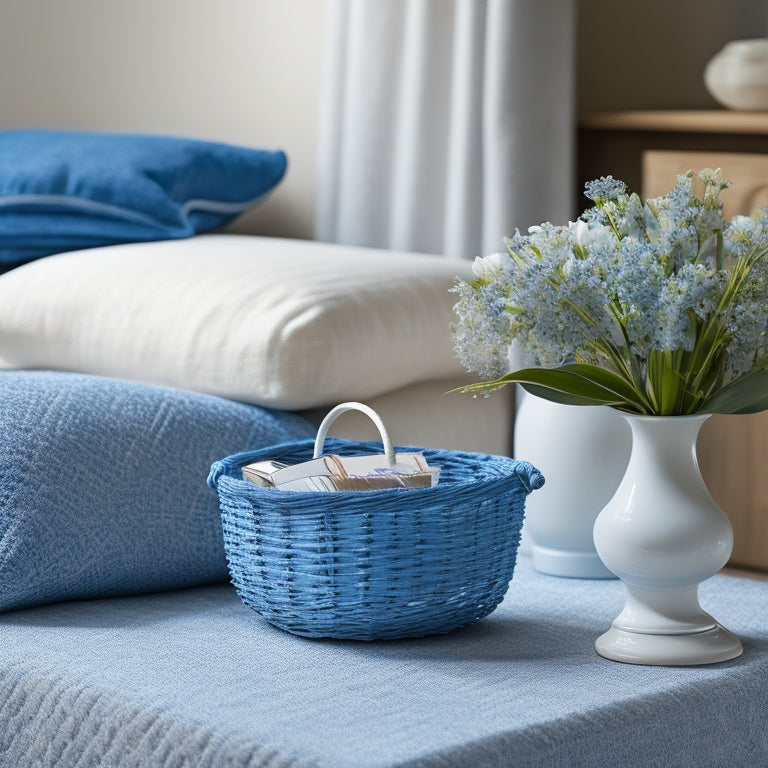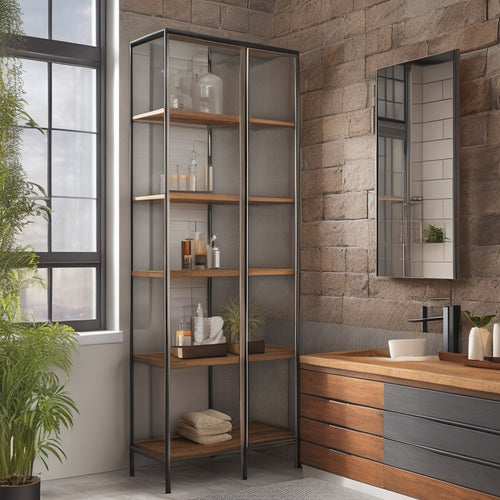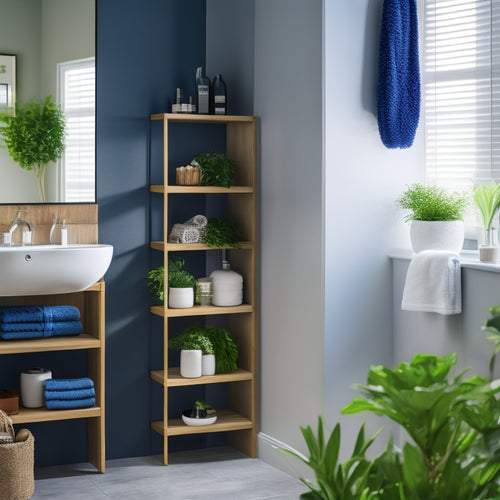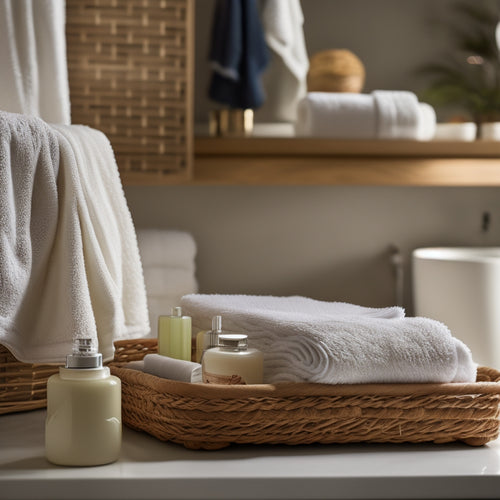
Craft a Functional Bedside Caddy Today
Share
Craft a functional bedside caddy by first gathering essential materials, including durable background fabric, contrasting pocket fabrics, and non-adhesive Velcro. Design and sew the organizer with precision, customizing with fabric selection and employing finishing touches for a refined appearance. Assemble and attach the caddy using velcro straps, ensuring an adjustable fit for various bedrail widths and a snug, secure attachment. With attention to detail and careful craftsmanship, create a storage solution that keeps your bedside essentials within easy reach. By following these steps, you'll be well on your way to crafting a functional bedside caddy that meets your unique needs.
Key Takeaways
• Select durable background fabric like canvas and contrasting pocket fabrics for a functional and stylish bedside caddy.
• Design and sew the organizer with precise techniques, focusing on a refined appearance and convenient storage solution.
• Attach non-adhesive Velcro straps to the background fabric for an adjustable and secure fit on various bedrail widths.
• Choose fabrics that complement each other in color, texture, and durability, considering the purpose and frequency of use.
• Pay attention to detail and employ strong thread and precise sewing techniques to ensure a snug, comfortable, and professional finish.
Gathering Essential Materials
To craft a functional bedside caddy, begin by assembling the necessary materials. These include a durable background fabric such as canvas, contrasting pocket fabrics, clear vinyl fabric for the alarm clock pocket, non-adhesive Velcro, and basic sewing materials like thread, scissors, and a measuring tape.
Sourcing supplies is an important step in this process, as it guarantees you have everything needed to complete the project. Choosing fabrics that complement each other in terms of color, texture, and durability is also vital. Consider the purpose of each fabric and select ones that will withstand frequent use.
Designing and Sewing Organizer
With a well-curated selection of materials at hand, the next critical step in crafting a functional bedside caddy is to carefully design and sew the organizer, incorporating deliberate features that cater to individual needs and preferences.
Fabric selection plays a crucial role in customization, allowing you to choose materials that complement your bedroom's aesthetic. For the pockets, select fabrics that provide adequate structure and durability.
Employ precise sewing techniques to guarantee a professional finish, paying attention to finishing touches such as neatly sewn corners and secure pocket bottoms. By doing so, you'll create an organizer that not only meets your specific needs but also boasts a polished, refined appearance.
Assembling and Attaching Caddy
Secure the bedside organizer to the bedframe by attaching velcro straps to the background fabric. This ensures a vital and adjustable fit that accommodates various bedrail widths. This essential step guarantees the organizer remains in place, providing a convenient storage solution for your bedtime essentials.
To assemble and attach the caddy, follow these attaching instructions:
- Pin the velcro straps to the back of the background fabric, ensuring even spacing and a secure fit.
- Sew the straps in place, using a strong thread to prevent detachment.
- Adjust the straps to fit your bedframe, ensuring a snug and comfortable fit.
Frequently Asked Questions
Can I Use Other Materials Instead of Canvas for the Background Fabric?
When selecting alternative materials for the background fabric, consider faux suede or burlap alternatives, which offer durability and texture. These options can provide a unique aesthetic while maintaining the functionality and structure of the bedside organizer.
How Do I Adjust the Pocket Sizes if I Have Larger Items?
When designing a bedside organizer for a client with a large tablet, for instance, adjust pocket sizes by increasing pocket depth and prioritizing items to guarantee a snug fit, securing efficient storage and accessibility.
Are There Any Specific Sewing Machine Settings for Vinyl Fabric?
When sewing vinyl fabric, adjust your machine settings to accommodate its unique properties. Optimize vinyl tension by reducing pressure, and set a shorter stitch length (1.5-2mm) to prevent skipped stitches and guarantee a strong, smooth seam.
Can I Add More Pockets or Features to the Organizer Design?
What limits the design potential of a bedside organizer? None, when customization options are limitless! Additional compartments can be seamlessly integrated, accommodating unique needs and preferences, ensuring a tailored storage solution that perfectly complements individual lifestyles.
Is the Bedside Organizer Suitable for Use on Cribs or Toddler Beds?
The bedside organizer is not recommended for cribs or toddler beds due to Crib Safety concerns and the potential hindrance of Toddler Independence; instead, consider adapting the design for older children or adults.
Related Posts
-

Tall Industrial Bathroom Cabinet for Narrow Spaces
A tall industrial bathroom cabinet is your solution for narrow spaces, combining style with practicality. It reaches ...
-

Waterproof Corner Storage Solutions for Bathrooms
Waterproof corner storage solutions are perfect for maximizing space in your bathroom. These stylish options employ u...
-

Must-Have Bathroom Items: Your Complete Checklist
A well-stocked bathroom begins with the essentials: toilet paper, hand soap, and toothbrushes for personal hygiene. S...


